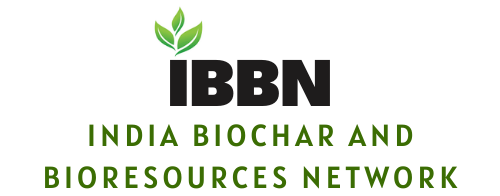Research Paper
Bioresources: The Vital Link to Traditional Rural Livelihoods in India
At a recent meeting held in one of the villages in the project area of Indian Bioresources and Biochar Network – IBBN in Byrakur Gram Panchayat, Mulbagal taluk, Kolar Dist the villagers who were present responded with interest and enthusiasm about past and present concerns and reactions about the use of trees, crop plants, medicinal shrubs, leafy greens and their use of ponds, lakes, streams and common lands in their villages.
In a village there are a variety of uses of common (property) resources such as lakes, ponds, streams and lands including fishing, grazing, artisanal livelihoods, firewood and sesonal farming by those who don’t own lands like landless labourers and workers.
The villagers are partially aware of the ownership of such lands, with very few having experienced different use of these lands. This means ecological commons (lands) can be put to a variety of uses and can be managed for the community and individual benefit. All of this depends on regular ease of access to such lands and the way that the local government and the government departments / state governments determine their uses.
A plan can also be prepared about the use of particular trees which can be for use by all, such fruit trees, and those which would decrease the external chemical fertilisers and pesticide inputs by preparing a plan for planting a variety of trees with the support of the villagers and their active participation.
The well-being and flourishing of a village community is linked to conflict free- access of people to these common resources. An insight into how ecological commons including land and water commons are being managed comes to us through a study of the decision making structures in a community with a local government such as a panchayat. Such a study allows us to look into what happens when grasslands, agricultural lands and water bodies are not accessible by the farmers and villagers due to change in practices a few decades ago and how it impoverishes the community. For instance, the ways in which this change of practices such as growing eucalyptus tree plantations near areas where subsistence agriculture was established practice over long periods earlier has disrupted these users from economic well-being and reduced farmers and labourers to being increasingly dependent on government agencies and departments to support the bio and chemical inputs for their agriculture such as seeds, manure, fertiliser and pesticides etc.
It was observed that two generations ago, farmers and their families knew how to identify more than a hundred different varieties of leafy greens, but now they don’t have that knowledge anymore. These nutritious greens including both wild growing and kitchen garden crops which are known as “soppu” in Karnataka would be picked in common resource lake shores and lands. The farmers and their families lack access to these lands and now malnourished children and younger people especially women in the village lack basic nutrition.
Lakes and marshes were maintained by traditional systems. Local livelihoods such as pottery prepared from the clay dug up by desilting of such ponds, harvesting nutritional fish varieties from the water bodies in season, all these are also being affected due to the lack of access to water-commons.

We can see that a variety of livelihoods become invisible because the resources which these livelihoods depend on are not available anymore. The skills available with the Potter’s and their families get ignored or neglected and they are pushed into vulnerable situations.
An intervention both at policy and ecological management level therefore requires that Bioresources and bio-inputs such as Trees fallen leaves, broken twigs and branches, shrubs and bushes, herbs and leafy greens, plants for household remedies and medicinal uses, tubers, bamboo, etc need to be accessible and available for use by the entire village community based on the rejuvenation, maintenance and management of the village common water and land resources. Such resources need to be in the control and management of the local government which is the gram panchayat (a cluster of few villages) and also benefit individuals as well as community groups by providing bioresources for collective uses.
The sustainable use of these resources therefore depends on the preparation of a plan for the bioresources available with the participation of the men, women and children of the village / panchayat. Interest in preparing such a plan would create an opportunity to identify, map and in recognising the rights of various current and previous user groups. If excess resources are available then they can be shared with a higher tier of government such as district or state authorities.
— Written by Vinay Baindur, Consultant, IBBN
